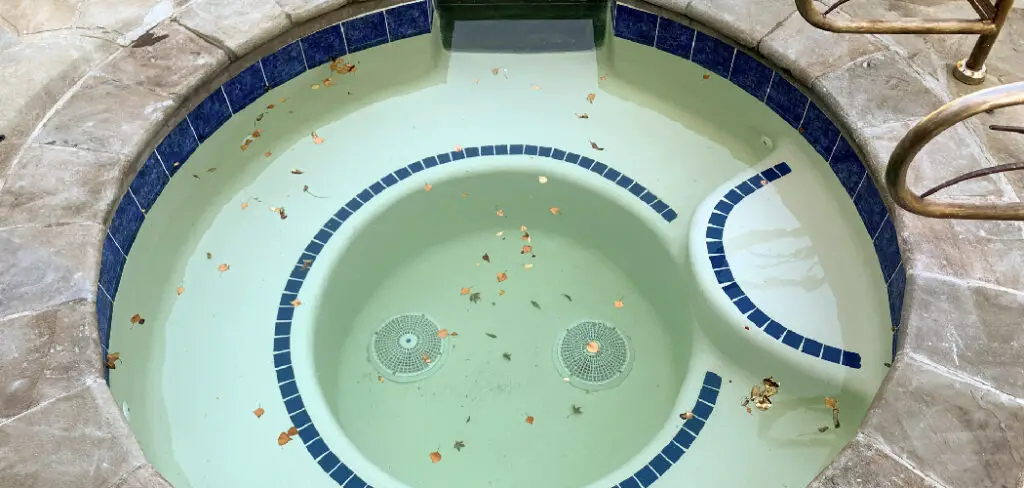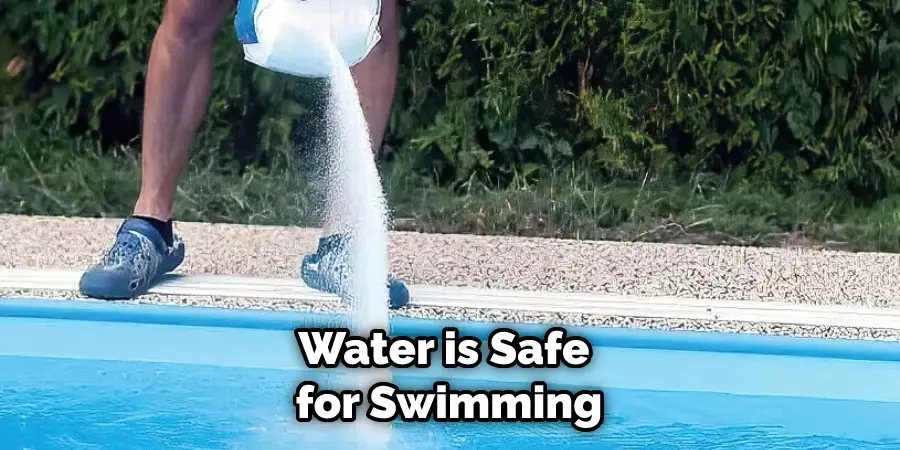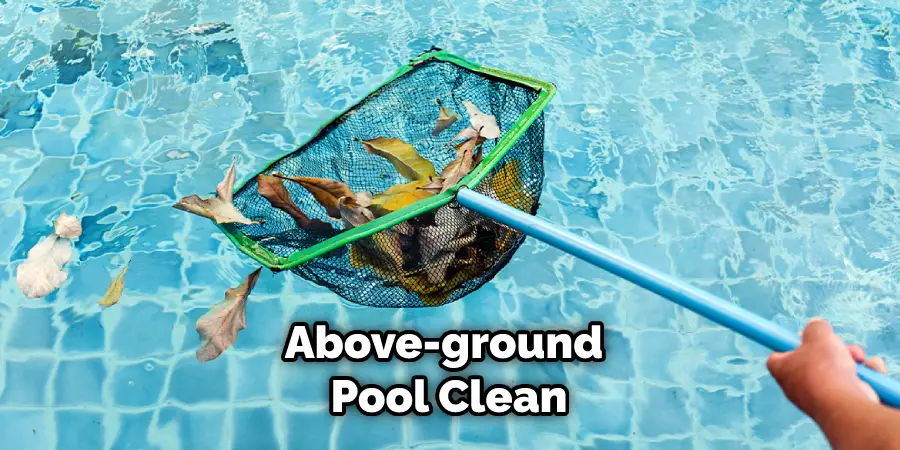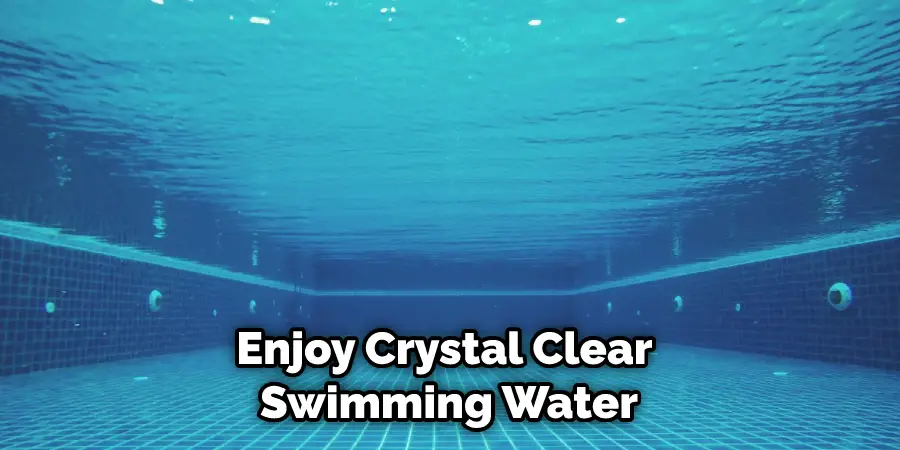
Maintaining a clean and healthy swimming pool can be difficult at times, but with the right methods and techniques, it’s totally achievable! Many people wonder how to add liquid chlorine to an above-ground pool, as this is often considered one of the simplest, least expensive options for chemical sanitation.
If you want your swimming area to stay crystal clear during the summer months and throughout the year, following these tips will help you keep things easy and hassle-free so that you can focus more on enjoying yourself in the sunny weather. Keep reading to learn more about how to add liquid chlorine to above ground pool.
Can You Add Liquid Chlorine to Above Ground Pool?
Installing an above-ground pool has become increasingly popular as a quick, cost-effective way to enjoy swimming in your own backyard. Those who have taken the plunge and find themselves asking, “Can I add liquid chlorine to my above-ground pool?” will be pleased to know that the answer is yes!
Chlorine is just as effective for keeping an above-ground pool clean and healthy, with the key difference being how much you need to use. Since an above-ground pool holds less water, it’s important to keep chlorine levels in check, as it dissipates faster than in an inground pool and can easily turn your water cloudy or damage surfaces.
With just a little care when handling chlorine, you’ll soon be able to get your feet wet and relish splashing around in your crystal-clear backyard oasis.
Why Should You Add Liquid Chlorine to Above Ground Pool?

Above-ground pools should have liquid chlorine added to them regularly in order to ensure that the water is safe for swimming and free from bacteria. Liquid chlorine has a faster dissolve time than other forms of chlorine, so it can quickly start eliminating bacteria in the pool upon contact.
It’s also easy to maintain proper levels of liquid chlorine in a pool, as you can use a test kit to measure the amount needed after each addition and tweak it accordingly.
Liquid chlorine is more affordable and cost-effective compared to other more costly pre-packaged pool chemicals. Adding it regularly will save you money in the long run while providing your above-ground pool with clean, safe water for swimming!
7 Tips to Follow on How to Add Liquid Chlorine to Above Ground Pool
1. Before You Begin
Before adding liquid chlorine to your above-ground pool, a few steps must occur. The first is to test the pH levels in your pool by using a test kit. The ideal pH level for pools is 7.2-7.6, so if your levels are outside of this range, you will need to adjust them before adding chlorine.
If your pH levels are too low, use sodium carbonate (soda ash) to raise them; if they’re too high, use muriatic acid or sodium bisulfate (dry acid).
2. Determine the Water Temperature
Once you have adjusted the pH levels in your pool, ensure that the water temperature is between 65-85 degrees Fahrenheit before adding liquid chlorine—if it’s lower than this range, wait until it rises before continuing with the next step. This ensures that the chlorine can work optimally and won’t be too weak or too strong for your pool water.
3. Adding Liquid Chlorine
Now that your water has been tested and adjusted as necessary, it’s time to add the liquid chlorine! First, make sure you don’t pour it directly into skimmer baskets or other filters as this can damage them; instead, pour it directly into your above-ground pool, which can mix evenly throughout its entirety.
To avoid staining around the edges of your pool due to improper distribution of chemicals—which can happen when adding granular products like stabilized chlorines—liquid chlorine should be used instead.
4. Determining the Amount of Chlorine to Use
How much liquid chlorine you add to your pool is entirely dependent on how big it is and how heavily used your above-ground pool has been since its last chemical treatment.
Generally, 2-4 ounces of liquid chlorine per 1,000 gallons of water should do the trick—but it never hurts to double-check your test kit beforehand!
5. Adding Algaecide

Algaecide works alongside chlorine to keep the water in your above-ground pool clean and clear—it should be added with every chemical treatment and after heavy rain or sunlight exposure. Make sure to use a non-metallic algaecide, such as polyquat 60 or copper-free algaecides, to avoid staining on your pool liner.
6. Circulating Your Pool Water
To ensure that the chlorine is evenly distributed throughout your above-ground pool, it’s best to circulate the water for several hours. This can be done with a pool pump or by manually stirring the water with a paddle.
If you have an automatic cleaner, it may also help to run it for some time after the chlorine has been added to ensure maximum distribution.
7. Checking Your Chlorine Levels
Once your pool is adequately circulated and free of any debris, it’s important to check your chlorine levels again with a test kit. Ideally, they should read between 1 and 4 parts per million (ppm), depending on how heavily used your pool is.
If the levels are too low, you can add more liquid chlorine; if they’re too high, dilute them by adding more pool water.
That’s it! You’ve now learned how to add liquid chlorine to above ground pool. Make sure you take the necessary safety precautions when handling chemicals and that you have a clear understanding of how to properly use them before beginning any chemical treatments. With these seven tips, you can keep your pool clean and clear all summer!
Things You Need to Know Before Adding Liquid Chlorine to Above Ground Pool
Adding liquid chlorine to an above-ground pool is a great way to keep it clean and hygienic. However, before you go down that road, it’s important you know what you’re getting into. You’ll need to ensure that the pH and alkalinity levels are correct for the chlorine to do its job properly.
You’ll also need to get the recipe for chlorine, as too much could damage the pool’s surface or water components. Once you’ve got these things sorted out, adding liquid chlorine is fairly simple – just pour it into your skimmer basket and let your circulation pump take care of the rest!
You Can Check It Out to Fix Above Ground Pool Liner That Has Slipped
Benefits of Adding Liquid Chlorine to Above-Ground Pool
Maintaining an above-ground pool can be a lot of work without the right supplies. Adding liquid chlorine to regular water treatments is essential for keeping your pool at optimal chlorination levels throughout the season.
Using liquid chlorine instead of tablets is convenient; simply pour it directly into the skimmer and watch as it quickly distributes its powerful sanitizing properties.
With liquid chlorine, you’ll enjoy crystal-clear swimming water, free from algae growth, bacteria, and any other contaminants that could ruin your fun family time.
Additionally, liquid chlorine helps pH balance remain consistent and stabilizes it during temperature swings. In short, investing in liquid chlorine for your above-ground pool will have you taking a big dip with confidence every time!

4 Common Mistakes People Make When Trying to Add Liquid Chlorine to Above Ground Pool
1. Adding Chlorine to The Pool without First Testing the Water
One of the most common mistakes people make when adding chlorine to their pool is failing to test the water first. It’s important to test the water to ensure that it’s properly balanced before adding any chemicals. Otherwise, you risk making the problem worse.
2. Adding Too Much Chlorine
Another common mistake is adding too much chlorine to the pool. This can be a problem because chlorine is a powerful chemical and can cause skin and eye irritation if there’s too much of it in the water.
It’s important to follow the manufacturer’s instructions carefully and only add as much chlorine as is recommended.
3. Adding Chlorine Directly to The Pool
Another mistake people make is adding chlorine directly to the pool without first dissolving it in water. This can cause the chlorine to react with other chemicals in the pool, leading to dangerous fumes or even explosions. Always add chlorine to water before adding it to the pool.
4. Not Using Proper Safety Gear
When adding chlorine to your pool, it’s important to use proper safety gear, such as gloves and goggles. This will help protect you from the skin and eye irritation.
Conclusion
Maintaining clear and safe waters in an above-ground pool requires regular attention and care—including regularly adding liquid chlorine! Following these steps will ensure that you are able to keep up with this crucial task without any issues or complications arising from incorrect pH levels or improper chemical distribution within the waters themselves.
With just a bit of extra effort each week, soon enough, you will have crystal clear waters for all members of your household for enjoyable memories made together! Thanks for reading our post about how to add liquid chlorine to above ground pool.
You Can Check It Out to Level an Inflatable Pool on Concrete


